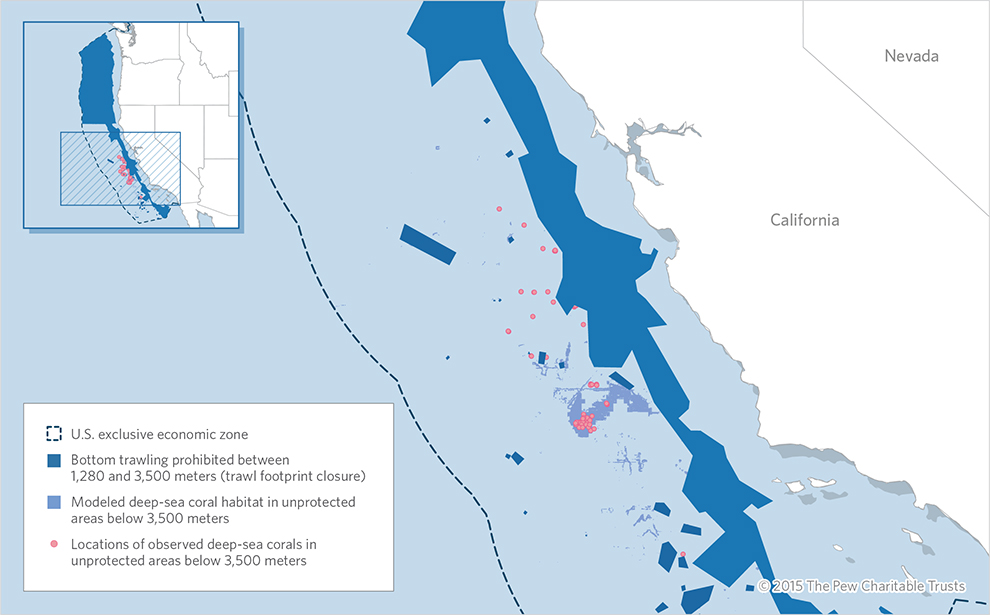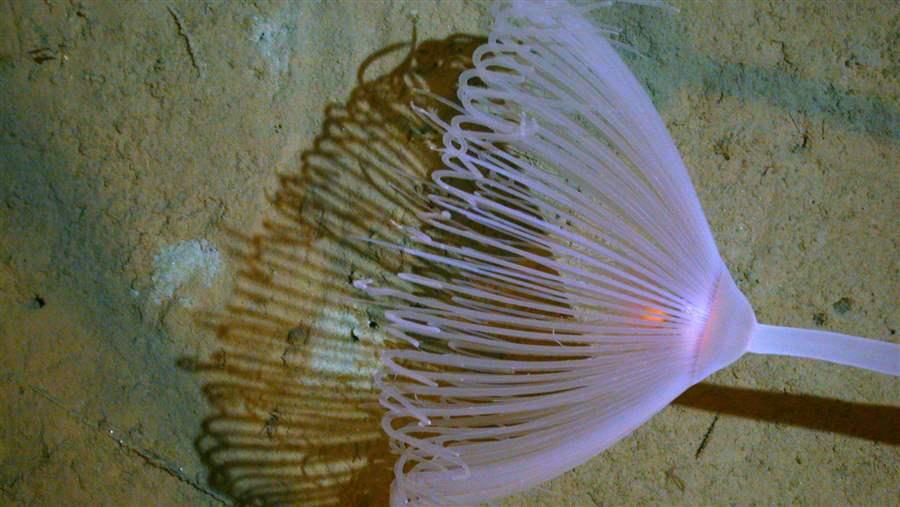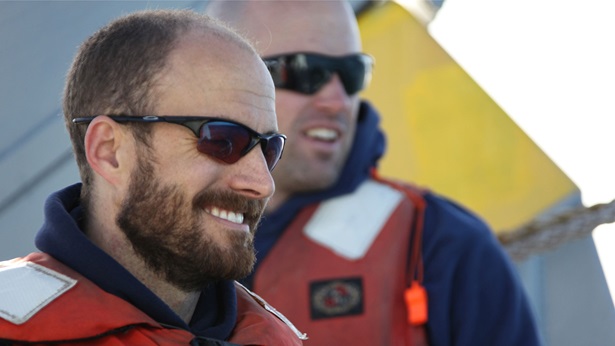Let’s Protect Deep-Sea Ocean Floor Habitat Along the U.S. West Coast

Mention the word “coral,” and images of tropical reefs, sunlit waters, and palm trees are likely to come to mind. But scientists are discovering that some of the world’s most lush and vibrant coral gardens lie thousands of meters beneath the ocean’s surface, where the temperature can be frigid and the light absent. These cold-water corals are even found more than 3 kilometers (1.86 miles) deep. Once thought to be lifeless mud, this deep habitat is in fact dynamic, fragile, and critically important to life on Earth because of its role in storing carbon and nurturing half of the biomass in the world’s oceans.
This habitat faces multiple long-term threats. Advances in technology enable bottom trawling in ever-deeper waters, and demand for rare earth minerals is driving more mining exploration of the deep sea. As technology enables mankind to extract natural resources in deeper and more remote areas of the globe, West Coast fishery managers have an opportunity to protect pristine deep-water areas off the California coast from bottom trawling before it’s too late.
 Monterey Bay Aquarium Research Institute
Monterey Bay Aquarium Research InstituteResearchers are documenting an incredible diversity of animals on the deep seafloor, including this sea pen, a type of coral, almost 4,000 meters below the surface off the coast of California.
In 2006, the National Oceanic and Atmospheric Administration’s Fisheries Service (NOAA Fisheries) rejected the Pacific Fishery Management Council’s decision to prohibit bottom trawling in waters deeper than 3,500 meters along the U.S. West Coast. However, the federal law governing U.S. fisheries has since been revised to clarify that regional councils have the authority to take a precautionary approach and protect pristine areas of seafloor that may contain deep-sea corals. In fact, managers in the mid-Atlantic used this provision in June 2015 to protect 98,400 square kilometers of deep ocean bottom, with NOAA Fisheries’ support.
Now West Coast fishery managers are again considering protections for deep-sea habitat off the coast of California, and even though the law clearly allows it, NOAA Fisheries has expressed skepticism. But Pew’s analysis of NOAA’s own data, shown on the accompanying map, demonstrates that an abundance of corals live in these pristine areas of ocean wilderness. This area of deep, untouched seafloor accounts for roughly 40 percent of all federally managed ocean territory off the West Coast. These deep-sea ecosystems take centuries to grow—one type of coral has been documented at 4,200 years of age—and harbor long-lived species that are highly vulnerable to depletion.
NOAA and the Pacific Fishery Management Council need to hear that the public supports protection of this fragile ocean habitat.
Take action
It’s time that we value ocean wilderness for what it contains and not just for what can be extracted. A healthy and intact seafloor is a legacy we should pass to future generations. Visit pewtrusts.org/pacifichabitat to find out how you can help.










